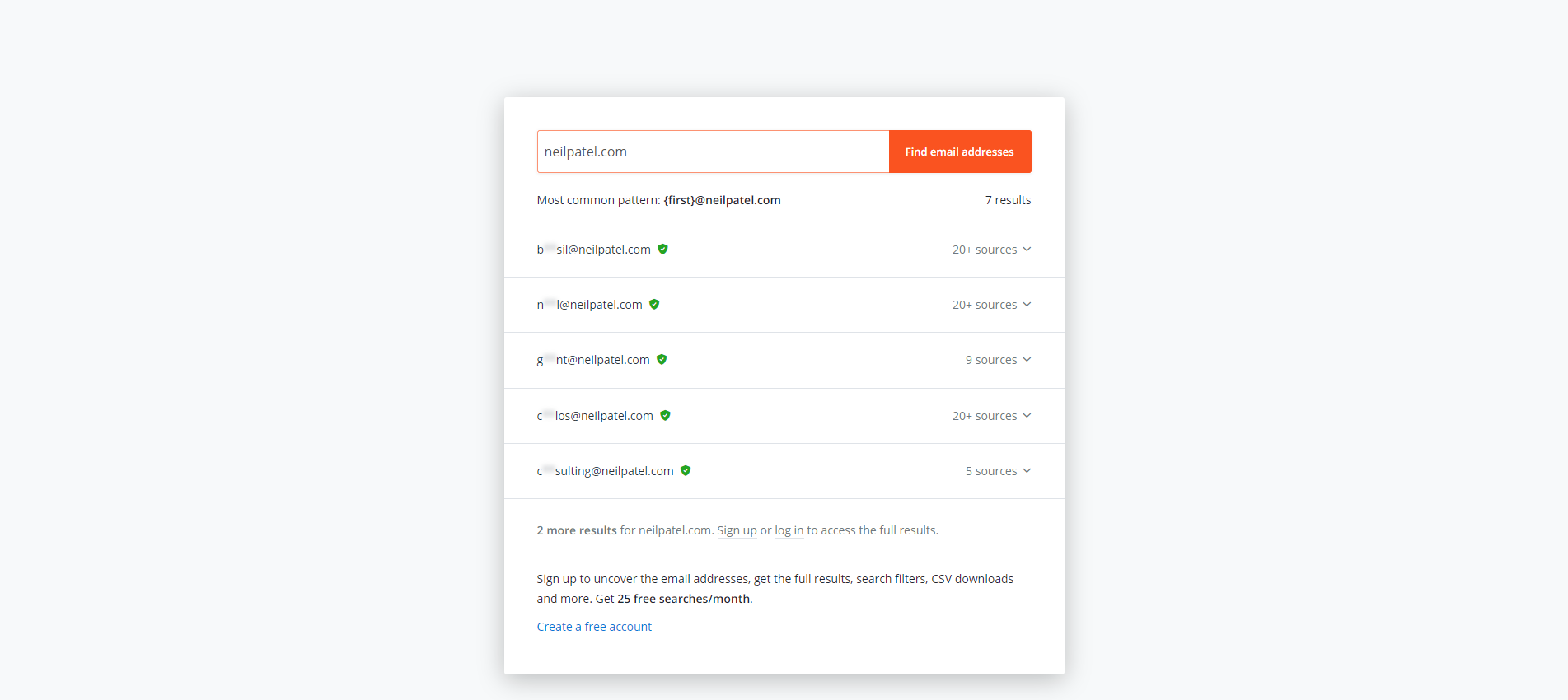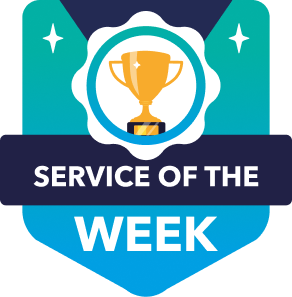This post discusses increasing your website's Domain Authority (DA).
But before we get into the nitty-gritty, let's set the record straight bout DA first.
Demystifying Domain Authority
Domain Authority is a metric by search engine optimization (SEO) software Moz to determine a website's authority. The higher the website's DA (on a scale of 0-100, 100 being the highest) is, the greater its authority.
Domain Authority came into popularity as a replacement for Google's PageRank (PR), which also helps people determine websites the search engine finds valuable.
However, Google stopped updating PR publicly, although they still use it as an internal metric to score websites.
This forced site owners to find alternatives that can help them determine which sites are authoritative and, therefore, must be prioritized in their link building campaigns.
At that time, Moz has the closest metric that resembles PR—it computes a site's link profile to determine the score.
Since then, the Moz Domain Authority has been the standard link builders use to prospect link partners and get the most results out of their campaigns.
How is Domain Authority Calculated?
Google collects a site's PageRank by analyzing its link profile. The more high-quality linking root domains a website has, the higher its PR score and website authority is.
To calculate Domain Authority of a site, enter the domain URL on Moz's Link Explorer. It's a premium tool but has a free plan with limited searches month searches.

What is DA Primarily Used For?
Site owners used Domain Authority to find and filter link prospects.
Ideally, they want to acquire backlinks from high-quality sites, most of which have high DA scores (on a scale of 0-10, 10 being the highest).
Getting dofollow links from these sites enables them to increase the website's search engine ranking , resulting in higher organic traffic.
What Domain Authority Is Good?
To know what a good Domain Authority score is, you have to look at service providers offer inbound links from high authority websites.
Most of them offer websites with DA 30 as their lowest. This is what they consider an acceptable Domain Authority to build links from.
Of course, the higher the DA, the better the website is.
Does Google Look at Domain Authority?
Domain Authority is NOT a direct ranking factor. Just because you have a high DA doesn't mean your website ranks on top of your target keywords all the time.
At best, it's a guide to help you vet sites to build links from much more conveniently.
Even then, you may still have to check a site's link profile manually if they have spammy and low-quality links that could negatively affect the website in the long run.
Next, and related to the first point. DA (or any of its alternatives) is not the be-all-end-all of SEO.
There are sites with low DA scores that generate lots of organic traffic by ranking on top of search engine results pages (SERPs) for high-volume search queries. That's because most of them have good on-page SEO, i.e., great content, fast-loading pages, etc.
So, Domain Authority (and backlinks to a greater extent) is just part of a holistic SEO strategy you should develop and execute for your website.
Ways to Build Website's Domain Authority Score
Despite these things, however, increasing your site's Domain Authority should remain in your best interests
While correlation is not causation, having a high DA score for your site opens more opportunities to facilitate your site's growth.
Aside from getting link opportunities from your site that you can monetize, you can use your site's authority to foster a more trusting relationship with your audience.
You can also use the DA as social proof to connect with influencers and other authorities in your industry to grow your site and its reach further.
That said, below are ways to achieve a much higher Domain Authority score for your website:
Build High-Quality Links
As mentioned, links are part of what determines whether or not your SEO campaign is a success. But it plays the biggest role since it's the most vital ranking factor alongside content.
So, creating an off-page SEO campaign that lets you build dofollow links from high-authority sites is a must.
Most of the tactics that can help you successfully land backlinks on your target site are done via email outreach.
Building rapport with prospects first is a necessary step before you can build links on their websites. And you can do this by knowing who to reach out to on the site and sending that person an email.
That said, you need to find the best address to send the outreach email and follow-ups. Hunter.io is one of the best email finder and verifier tools out there.
It scrapes potential email addresses of a domain and identifies the person who owns the address and their respective positions in the organization

You also want to use a tool similar to Lemlist, where you can create drip campaigns sent out to prospects at intervals. This also you to automate the outreach process and monitor the results of the campaign.

For instance, if it has a low response rate, you can try rewriting the emails, sending the emails at different times, and others to help get more replies.
Now that you have the tools and system in place, it's all a matter of executing your link building initiative to a tee.
Of course, you can't just ask for a backlink on their site because they won't give it to you. For your link building campaign to be effective, you need to offer value in exchange. This way, they'll be more willing to link back to your website.
Below are ways you can achieve this:
Guest Blogging
Guest blogging has been a tried and tested link building approach for years.
In a nutshell, it requires you to write a blog post about a topic relevant to your link prospect's website, thus increasing its chances of getting published.
You can include a backlink to your site from the content or the author bio, depending on where the editor allows it.
Below is the step-by-step process on how to execute your guest posting strategy:

(Image Source: Point Visible)
Using Moz or your SEO tool of choice, you must first filter your prospects based on their DA. This narrows down the list of sites you should try and reach out to in your campaign.
If you're using Moz, it will help if you eliminate sites with high Spam Scores from the list. Securing links from these sites can cause more harm than good to your site's search rankings, let alone its DA.
Next, you want to find the emails of the owners or editors of the sites.
As a rule of thumb, you don't want to write guest posts on sites that readily accept guest posts. These are sites with a "Write for Us" page containing the editorial guidelines and costs of each published guest post.
Generally, these sites are of poor quality and have guest posts about topics unrelated to their niche or industry. Associating your website with these sites by getting a link from them could cause problems down the line, significantly if they get penalized due to having spammy and thin content.
Therefore, it's best to get published on sites that don't allow just anyone to submit a guest blog. The high barrier of entry and the exclusivity your website can achieve from the backlink could help propel your site to greater search rankings.
Link Insertions
Also known in the industry as niche edits, link insertions refer to the process of including one's link to an existing post.
In most cases, link inserts are more effective than guest blogging. The reason is that the page has accumulated authority over time since it's been published for quite some time already.
You can determine a page's authority by referring to its, well, Page Authority (PA). It's another Moz metric that measures the page's likelihood of ranking on SERPs based on the volume and quality of links pointing to it.
As a result, getting a link from such a page will help your site increase its organic rankings.
Of course, page authority is just one of the many things to consider when searching for link insertion opportunities.
Below are the core variables you should look into:

(Image Source: Contentellect)
You can launch an outreach email campaign asking for site owners to include a link to your site from a relative and authoritative page on theirs.
However, the chances of getting a reply from them-let alone a positive reply-is slim to them.
Link insertion is a viable strategy if you have someone from the inside who can help include your links on your desired sites.
In other words, you want to hire a person who has connections with authors, editors, and even site owners from multiple websites.
At Legiit, freelancers offer link insertion services that cater to your needs.

Choose the best one based on its rating, customer reviews, and price to get the most out of your budget.
From here, you can increase your chances of securing high-quality backlinks and referring domains to your site, guaranteed to increase website Domain Authority.
Broken Link Building
This link building tactic has been around for a long time, and with good reason: it still works.
Its idea is to determine resource pages, listicles, or those with many outbound links relevant to your niche. Then identify which among the links on these pages are broken or point to a site's 404 page.
You can use the Check My Links Chrome extension to find these broken links.

You may need to check if the links are broken or not manually. Sometimes, the extension finds false positives.
Once you've identified these pages, you want to reach out to the site owner, informing them of the broken link.
Site owners place importance on broken links on their pages. These links create a poor user experience-nobody wants to click on a link only to find that it's broken.
As a result, they could have a negative SEO impact and decrease their rankings over time if they don't fix these links immediately.
Here's a simple diagram to help you determine when to use the broken link building tactic:

(Image Source: Ahrefs)
In essence, you can only suggest a link to replace the broken one to provide greater value to site owners. If you don't have a similar or identical page, create one that site owners will want to include as part of the resource page.
Since you help identify a broken link on your site, there's a good chance that they'll use your link with which to replace the broken one.
Hire Link Builders
When all's said and done, the easiest and most cost-effective way to increase your site's DA is to get help from experienced link builders.
While you can argue that building the links yourself will be much more affordable in the long run, you need to train people on how to execute your link building campaign.
This is easier said than done because you want to ensure they build the links correctly. One false move, like securing a link from an unknowingly spammy site, will knock your website out of organic search.
To avoid this, hiring link builders with a track record of helping site owners rank for their target keywords on search engines is the way to go.
Aside from link insertions and guest posts, Legiit freelancers offer other link building services that cater to your specific needs.
In particular, you want to get PBN links to your tiered links.
This link building tactic allows you to leverage private blog networks (PBNs) and harness their authority and power to supercharge your existing backlinks and increase your organic rankings and DA.
PBNs reside in the gray hat SEO area, so you want someone who knows their way around building links on these sites to help you out.
By diversifying your link building strategy using different tactics, you can improve your site's link profile on your way to achieving a good Domain Authority score.
Create Linkable Assets
To help complement your link building campaign, you must create content people want to link out to, even without telling them to!
The idea here is to create a guide or resource that offers immense value to your target audience.
This way, publishers will want to use your content as a reference on their site because it's challenging to replicate.
The kind of content you'll create for your linkable asset depends on the approach you'll take.
And to help you find out, below are some of the more popular link-worthy content types you should build on your site:
Skyscraper Technique
Brian Dean of Backlinko first popularized the Skyscraper Technique in 2014 . It has undergone multiple iterations since then, but the process remains the same.

(Image Source: Backlinko)
The initial version requires you to create the biggest and best version of the content targeting the keyword you wish to rank for.
However, as Google has put an onus on user intent, the technique pivots to creating content containing information users need to know about the topic.
That means the content doesn't have to be bigger and longer. As long as it satisfies user intent (regardless of how long or how many words it has), you can generate a good amount of links to it.
Initially, you want to create high-quality content using content optimization tools like Surfer SEO. They help you topically relevant create guides to your target keyword so you can increase its search rankings on Google.
Also, it helps if you send outreach emails promoting your Skyscraper content to your prospects and target audience for links. This helps grease the wheels of the page and rank it for its keyword much easier.
Infographics
Visual content like infographics is a great way to build links to your site passively.
For one, publishers always look for great images they can use alongside their written content. And, instead of designing one, they prefer taking existing infographics published elsewhere and linking to it.
Also, infographics are much easier to process and understand for people. That makes them ideal content to share on social media.
While social media shares aren't ranking factor, they can nonetheless help raise the visibility of your infographics, resulting in more views and potentially more links.

(Image Source: Zero Gravity Marketing)
You can create high-quality infographics using Canva or similar tools. They have templates to choose from, so you don't have to start from scratch. Its drag-and-drop also lets you bring your creative ideas to life even without design experience.
Before publishing the infographic on your site, add a shareable code below it that includes a link back to your website. This makes it simpler for publishers to pull the code and embed it on their page.
You can use FATJOE's Infographic Embed Code Creator to make this.
Online Tools
Calculators relevant to your niche are possible linkable assets. An example is the Website Cost Calculator App, where users can compute how much people should spend on creating a website.
Another online tool example is a generator like Business Name Generator. They help users brainstorm ideas for the name of their next venture.
These tools are much more complex to create than other linkable assets, which makes them perfect if you want to generate lots of backlinks to your site.
You will need help from a developer to create and program online tools.
But if you want to get an online tool off the ground, use JotForm to create calculators.
Focus on On-Page SEO
The quality and volume of linking domains influence your Domain Authority scores. But you shouldn't ignore your on-page SEO health, either.
The goal is to create a website optimized for its target keyword and implementing the best on-page practices. They help you set up your site's foundation for other websites to link to your pages.
Here are ways that you can achieve these:
Page Optimization Score
Similar to Domain Authority, Page Authority score doesn't directly result in a high Domain Authority score and its keyword rankings.
Nonetheless, achieving a high score for this metric lets you know that the page checks all the boxes as far as optimization is concerned.
By creating a site that search spiders can crawl and index much easier, you increase its chances of getting links to it!
There are multiple tools that help you analyze which on-page factors your page follows.
If you use Surfer SEO, you can use its audit feature. It will run your web page through a fine-tooth comb to see how optimized it is.
It computes your Content Score, missing backlinks, and your overall internal link structure, among others

Site Audit Score
Unlike page optimization, a site audit analyzes your entire website, from its pages to their respective structures
It goes beyond keyword optimization and looks at broken links, orphan pages, image alt text, and other small but vital factors affecting user and search experience.
Among the different tools to use, Ahrefs Webmaster Tools is arguably the best of the rest.
It lets you audit your website for free (provided you connect the tool with your Google Search Console).
Once audited, you will see your overall scores and suggestions for improving it.

Site Speed
Part of the site audit process is analyzing for its site speed.
It deserves its own section here considering that page speed has been deemed as a ranking factor since 2021.
You can see how fast your site pages are from your Google Search Console.
Or you can use Google PageSpeed Insights to to analyze a page's loading speed.

It shows you the aggregate page speed score of your site based on multiple factors.
If you site is slow, consider making the necessary changes to load it faster.
Conclusion
To iterate, Domain Authority is not a metric Google uses as a ranking factor.
However, increasing Domain Authority score of your site opens it to more opportunities for growth.
It allows your site to be considered an authority, thus allowing you to attract more audience to your business.
And by following the tips featured here, you can increase your Domain Authority and get the most out of your website.













 Download
Download